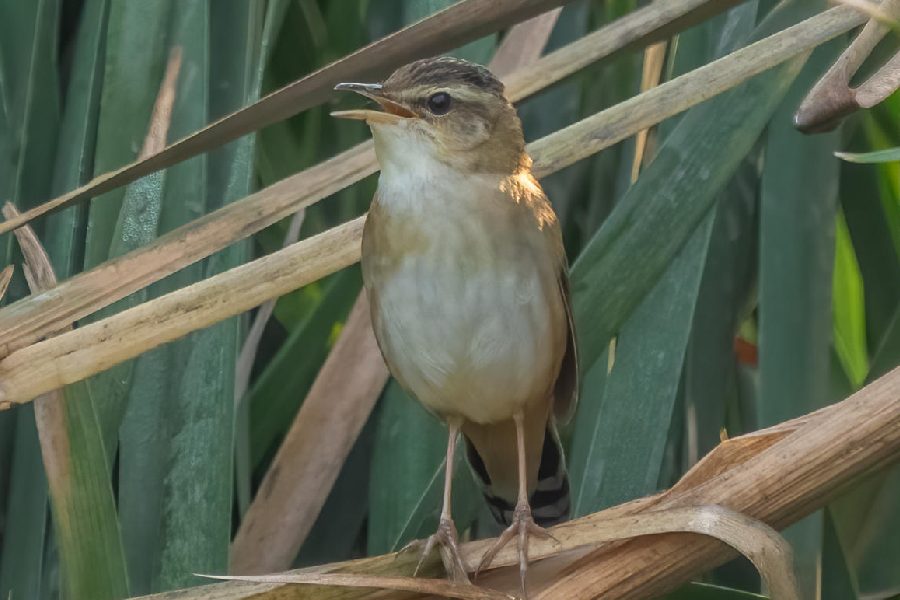A Pallas’s Grasshopper Warbler — a winter migratory bird that breeds in Siberia, Mongolia, China and the Korean peninsula — was photographed at a grassland behind the Owl More intersection around 1.5km from the Eco Park on Saturday.
Although grasslands are rapidly diminishing in New Town because of construction of offices, commercial and residential housing complexes and societies, the township continues to throw the occasional surprise as it attracts migratory birds every winter.
On Saturday, Souvik Roychoudhury, a senior executive at Cognizant who regularly goes out to photograph birds in New Town and Rajarhat, said he spotted the bird in a grassland close to a canal.
The bird was sitting on a long grass reed bordering the canal, around 1.5km away from the Eco
Park, off the Major Arterial Road.
“I set out on Saturday morning as it was the start of the weekend. I chose this site as it is close to my house. I was alerted by bird calls and as I moved closer I could see the bird. I tried to make as little noise as I could and it sat patiently as I clicked several photographs of it,” said Roychoudhury.
Sightings of this bird, also called the Rusty-rumped Warbler, has been rare in the past three decades, several birders told this newspaper.
Every year, migratory birds come to the Indian subcontinent to roost and
nest from several places
that turn too cold and harsh during winter.
The Pallas’s Grasshopper Warbler calls grasslands its home and is found in
places that have a combination of tall grass along
with some thicker vegetation that is close to water bodies and canals, according to e-Bird, the platform created by the Cornell Lab of Ornithology.
The place where Roychoudhury clicked its photographs in New Town has dense grass foliage and a canal that cuts through.
It is an insectivorous bird and survives by feeding on insects generally found in this type of terrain, especially grasshoppers.
Subhankar Patra, a veteran birdwatcher who runs a birdwatching group called SundayWatch, said the Palla’s Grasshopper Warbler has become “rare”.
“I will say it is rare to see this bird in our state. Twenty or thirty years ago one could see this bird in the Joka grasslands quite easily, but that does not happen any longer,” he said.
“In the past 30 years, this bird has not been sighted frequently. However, this year, the bird has also been seen in Baruipur and at
Diara (Hooghly),” said Patra.
The bird is small in size and can escape the eyes of untrained people as it camouflages perfectly in the backdrop of grass. The birdwatching community calls it a Sulker.
Swathes of Rajarhat and New Town still provide many birds a haven.
An expanse of tall grass behind the Mother’s Wax Museum comes alive every morning and late afternoon with the chorus of birds. The marshes and water bodies nearby are home to common avian residents and the odd migrant.
A wetland near the Hanuman temple, around 500m from the Seven Wonders Park, is another place where patience is rewarded with sighting of some common species.
A study by the forest department and Hidco confirmed the presence of 28 species in small patches of green along the Major Arterial Road.
